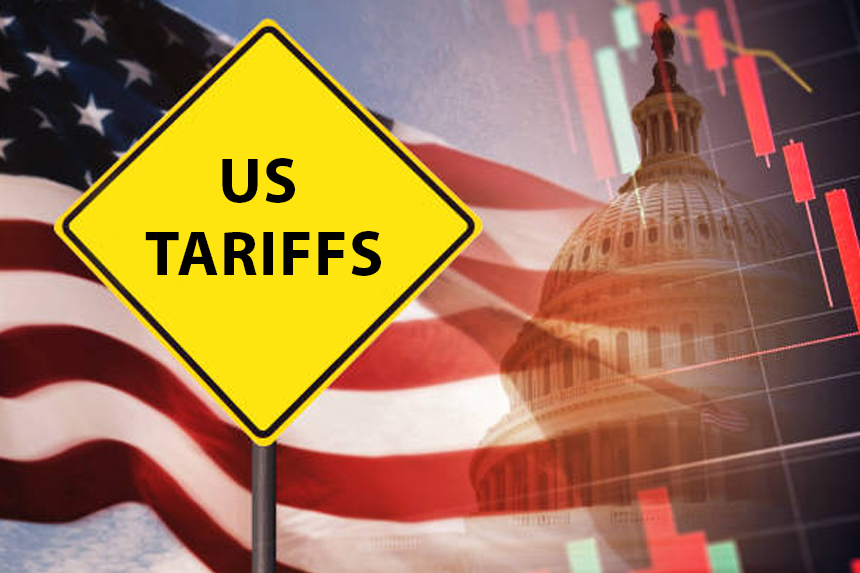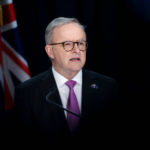The effects of these US tariffs on the global economy will be somewhat significant. A chart of US tariff revenue shows that these duties have already been reflected in a clear rise to levels not seen in more than a century. The revenue surges have exceeded even those of the 1930s high degree of protectionism. Overnight stock market declines also show the consequences, particularly in Asia where businesses are trying to adapt to the fast changes. The real test of these tariffs, nevertheless, will be broader: it resides in the change of long-standing economic ties and the restructuring of world trade flows.
- For what use does the Universal 10% Tariff on US imports serve?
- Is this more than a strategic negotiation—something more serious?
- How Are the New Tariffs Designed?
- What Impact Will This Have on Systems of Trade?
- How will the rest of the globe respond?
- Could Europe start to turn away US consumer brands?
- Will the tariffs cause US financial repercussions?
With these tariffs producing disturbances that might drastically change how nations interact in the trade sphere, the global trade system as we know it is poised to undergo seismic changes. Especially in Asia, a major issue is how these tariffs will disrupt many current supply networks and compel businesses to reassess their operations. The broad influence of these US tariffs points to an unparalleled change in the balance of world economic power, one that might alter world trade in the next years.
For what use does the Universal 10% Tariff on US imports serve?
These changes are mostly the result of a universal 10% tax on almost all imports into the United States from every nation. In effect on Friday night, this all-encompassing action represents a radical change in US trade policy. Furthermore complicating matters is the fact that dozens of nations with significant trade surpluses with the US will be liable to extra taxes. Targeting countries that have been exporting more to the US than they import, this strategy also targets many important Asian players—long a focus of US trade policies.
Particularly impressive are the tariffs imposed on Asian countries; the effects of these policies are being noticed in the corporate world. Thousands of factories and enterprises, particularly those in Asia, will probably find their business models upside down. The disturbance of existing businesses, which have been mostly dependent on trade with the US, could influence whole countries. These US tariffs will cause significant consequences since they will disturb the worldwide supply lines many multinational companies depend on. To fit the current economic environment, businesses may be compelled to locate new trade partners or even modify manufacturing techniques.
Given that China, a significant participant in world trade, could provide a more consistent and predictable trade climate than those severely impacted by US tariffs, one natural result of this transition is that companies will probably be driven into China. For China, this changing dynamic might be revolutionary since it gains from a fresh wave of commerce while businesses rethink their worldwide supply chains.
Is this more than a strategic negotiation—something more serious?
Some commentators have hypothesized that the use of these US tariffs is only a component of a larger negotiating tactic meant to result in improved trade deals with other countries. Still, the rhetoric emanating from US leaders seems to imply differently. With the tariff income set for intended tax cuts, the US government seems to be handling this problem of national significance. The White House is presenting this as a long-term approach to solving alleged trade imbalances, not as a transient solution.
One White House official even went so far as to say, straight forwardly: “This is not a negotiation, it’s a national emergency.” This clear statement shows that the US is committed to its trade goals and views these tariffs as a tool for changing the world economic system, not only as means of obtaining better agreements in discussions. The US is obviously committed to lower its trade imbalance and transform global business practices.
This strategy marks a significant change in US trade policy, one that gives home economic interests first priority over conventional worldwide economic cooperation. It points to a break from decades of diplomacy and cooperation as the US turns its attention toward a more self-serving, protectionist posture that might have major effects on the world scene.
How Are the New Tariffs Designed?
The US’s approach toward the so-called “reciprocal tariffs” is straightforward yet divisive. The US will basically charge a nation for having a trade surplus with it—that is, for exporting more to America than it imports. Nations will pay the tariff at a baseline rate of 10%, even in circumstances when there is no surplus. Designed to solve the US trade deficit, this method has been attacked as unduly simple and prone to cause global reprisals from nations all around.
Though this goal could have far-reaching effects, the policy is based on the belief that the US must lower its trade deficit to zero. It denotes a dramatic shift in the framework of world trade. Trade deficits and surpluses have historically been natural features of an interdependent global economy in which nations specialize in manufacturing the commodities and services most suited for their level of efficiency. The US’s attempt to correct this disparity marks a stunning break from accepted wisdom.
Furthermore casting doubt on the long-term feasibility of this strategy is the US’s insistence on utilizing tariffs as the main instrument to handle trade problems. Although the trade deficit has to be reduced, the issue of whether such extreme measures will have the intended impact or just cause additional economic unrest remains.
What Impact Will This Have on Systems of Trade?
For decades, surpluses and deficits have been expected in working trading systems. Nations specialize in manufacturing items they can most effectively and reasonably afford for their people. The US’s decision to drastically change this rationale by levying high taxes on nations with trade surpluses marks a basic change in the scene of world trade.
This action is sure to throw off supply chains, drive inflation, and change the competitive dynamics of world markets. Moving factories and businesses from one site to another will take years and, in many situations, may not be realistic. Particularly, for those aimed at East Asian countries, the tariffs might have an instantaneous and significant effect on the cost of consumer products such as toys, clothes, and gadgets. Everyday item prices might climb dramatically, creating inflationary pressures and upsetting the US and international economies.
Consumers, who will pay more for many daily items, will most certainly feel the direct consequences of the tariffs most intensely. These developments might influence consumer behavior and purchasing power, therefore influencing global economic activity to cause a more general slowing down. Long term, though, companies could adjust by changing their manufacturing or sourcing from different areas, hence perhaps fragmenting the world economy.
How will the rest of the globe respond?
The issue now is how the US tariffs will be received worldwide. Many nations are likely to retaliate by levying their duties on US imports, therefore sparking a full-scale trade conflict. Some countries, particularly in Europe, might, nevertheless, also find chances to gain from less expensive goods diverted from the US market. For example, commodities imported from Asia may suddenly be more reasonably priced for European customers as suppliers look for other markets outside the US.
Furthermore, the US’s emphasis on isolationism might force other big nations to merge their trade more tightly. For instance, the European Union might choose to deepen its internal markets and create deeper commercial links with nations outside of the US sphere of influence. Likewise, countries in Asia can choose China as a more reliable trade partner, therefore strengthening China’s impact on world commerce.
Could Europe start to turn away US consumer brands?
Particularly in Europe, a major result of the US tariffs could be changes in consumer tastes. Although European customers have historically been devoted to US-based goods, this allegiance may start to fade if tariffs drive price increases. Businesses depending mostly on European markets could discover lower demand for their goods.
Furthermore, under question could be the monopoly US IT behemoths have over social media platforms. To lessen reliance on US businesses, European authorities might choose to enforce tougher rules or establish other services. Should this occur, the global tech scene may change, and new players could find a platform.
Will the tariffs cause US financial repercussions?
The tariffs could provide major difficulties for the US government. The possible increase in inflation immediately caused the greatest worry. The US might have to hike interest rates to offset the inflationary pressures as numerous goods’ prices rise as a result of the tariffs. This can hold down economic development and increase the cost of borrowing for consumers and companies equally.
Long term, the US might suffer even more since its isolationist policies drive other nations to look for other trade partners. With the US tariffs key in changing the international economy, a messy global trade war seems almost unavoidable. Uncertainty will probably define the next years as countries negotiate the new reality that these extreme economic policies produce.








